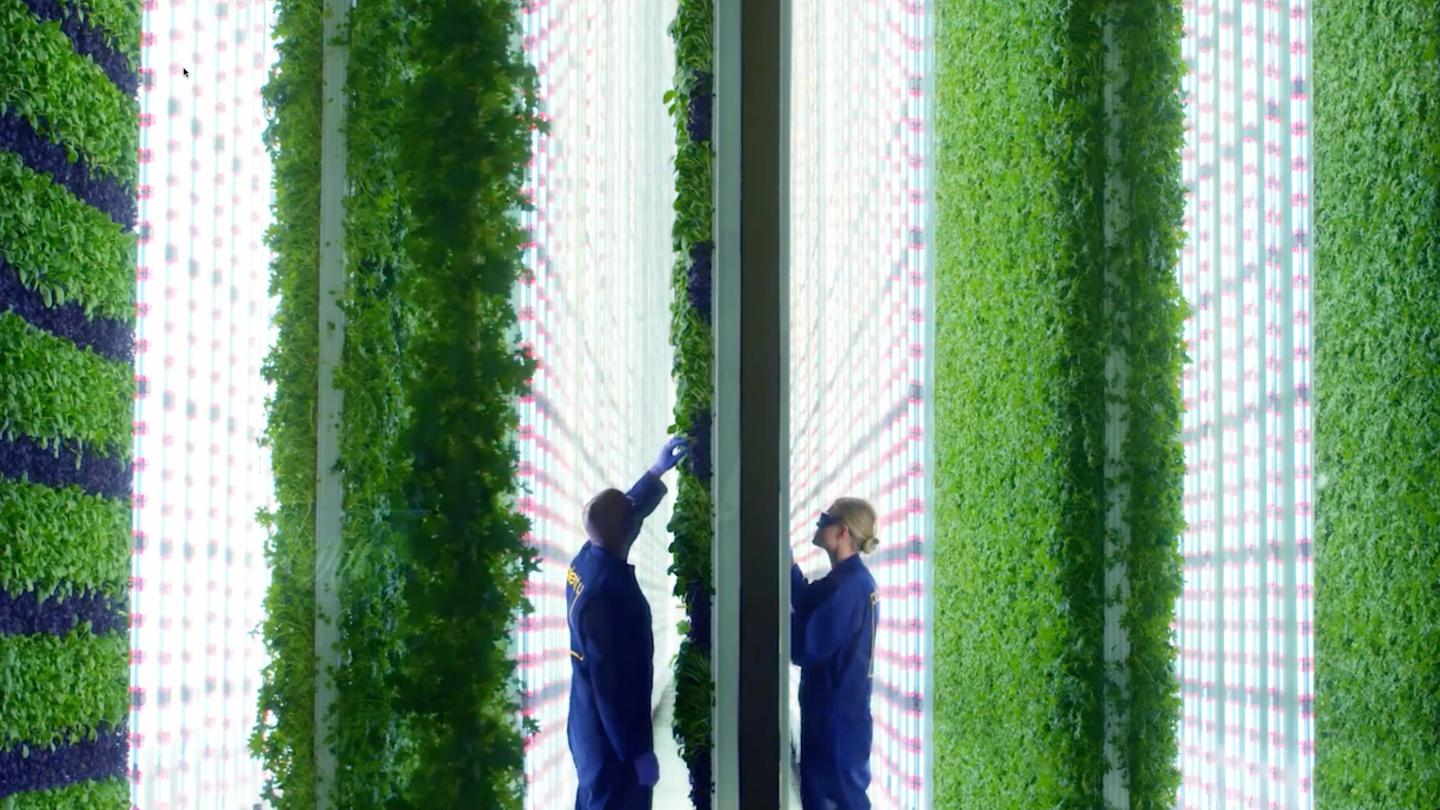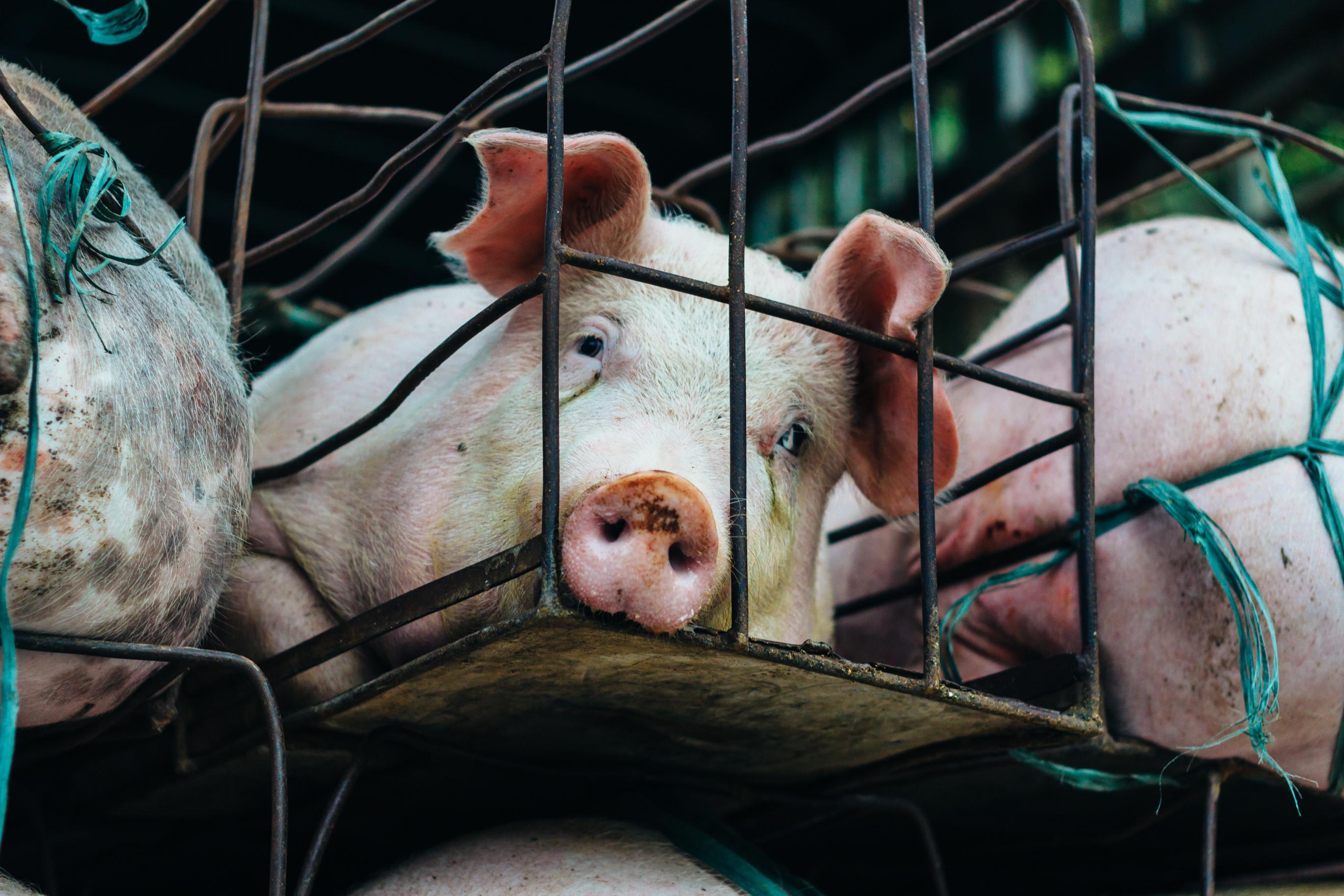Lab grown chicken nuggets makes cruelty-free meat possible

Freethink Media Inc
- A restaurant in Singapore recently served the world’s first lab grown chicken nuggets.
- Grown from animal cells, the nuggets taste like chicken because they are made from real chicken.
- The lab grown chicken is only available in Singapore, though regulatory agencies in other countries are considering approval.
Why we need lab grown chicken
The livestock industry can be gruesome, and chickens in factory farms have a particularly foul time. Chickens are often kept in conditions that many would find objectionable. Those raised for meat, known as broilers, are not always kept in cages, but they are typically given very little space — sometimes as little as eight-tenths of a square foot per bird — in a large production house alongside thousands of other chickens. In intensive operations, the smell of ammonia from their waste can become overwhelming and even cause the birds to fall ill if it is not ventilated properly.
Even if chickens were kept in a sort of five-star resort, genetics make their lives unpleasant. Modern broilers have been bred to grow at tremendous rates in the name of efficiency. They put on a lot of weight in a hurry, some birds growing by 300 percent in a single week. This rapid weight gain in the places desired for meat, like the breast, can make it difficult for the birds to move. A study in Denmark, for instance, found that 75 percent of farmed chickens had difficulty walking.
It is under such conditions that the world consumes about 50 billion chickens each year. Even if you’re not concerned about animal welfare, the environmental costs of getting a nugget from the farm to your plate are high enough to ruffle your feathers.
As it turns out, factory farms might be every bit as bad for the environment as the smoke belching factories of old. Several studies have suggested a link between living near factory farming operations and lung problems, including asthma. The disposal of waste products can befoul waterways if done improperly. The aforementioned ammonia emissions are also an ever-present concern.
Furthermore, these operations aren’t economically ideal for the people running them. Most modern chicken farms are contract farms, in which farmers make deals with large meat companies to produce birds under agreed upon standards. Farmers have little control over their operations and often fail to profit as the expenses mount.
There are many other problems. Chicken farms have a high number of workplace injuries. During last year’s pandemic, the tightly packed conditions in slaughterhouses made many of them the perfect place for outbreaks of COVID-19 to occur (among humans, not chickens).
As the world becomes wealthier and more people want to consume chicken and other meat, we need a radically new way to meet that demand.
Lab grown meat explained
The lab grown chicken is, unlike most currently available meat substitutes, actually made of chicken. The new product is made by Eat Just, an American company that until now has focused on alternatives to egg products.
To make cultured meat, scientists collect cell samples from the part of the chicken that they want to grow in the lab, for instance the breast, and place them in a bioreactor. This reactor contains ideal conditions for the growth and replication of the desired cell cultures. The cells then grow and replicate similar to the way they would inside of an actual bird. After harvesting, the cells are processed into desired shapes, in this case a nugget.
Eat Just’s director of Cellular Agriculture Vitor Espirito Santo explained to FreeThink, “We’re not trying to make a whole animal, we’re only focusing on growing the edible parts. And instead of growing those parts inside of the animal, we’re growing them using a culture process.”
As a result, the outcome is a nugget that looks, tastes, and feels like chicken because it is chicken — no bird required. Other options, like lab grown steak, are also in the works, though these are even more expensive and the texture problem remains to be solved.
Chef Kaimana Chee of Eat Just described the lab grown chicken he worked with as extremely similar to the typical chicken nugget. He explained, “The texture is tender and crispy on the outside and soft and juicy on the inside.” He goes on to mention that he finds an advantage of lab grown meat to be “that we don’t need to sacrifice the textures we’re accustomed to.”
Reviews of the lab grown chicken from critics and customers are also favorable.
Some bones to pick
Lab grown meat isn’t quite perfect yet, of course. At the time of writing, two chicken nuggets from Eat Just cost roughly $17. These costs, while a tremendous improvement over the $300,000 lab grown hamburger a few years ago, are still too high to be accessible to the typical consumer of chicken products.
Also, the only place where lab grown chicken has been approved for consumption is Singapore, though other places are considering it. The FDA and Department of Agriculture have discussed how lab grown meat would be regulated, but they have yet to approve any items for sale in the United States.
There is also the problem of getting people to switch to cultured meat. People take their food very seriously, and convincing people to switch from the familiar to something exotic may prove difficult.
A new world of cultured meat
Despite this, cultured meat is probably the future. The technology could be scaled up fairly quickly, with more and larger bioreactors producing greater amounts of meat. Eat Just hopes to reach the point where production improvements have lowered the price to a more competitive level within a few years.
It is also possible to grow meat in particular patterns. Using a scaffold, the cells can be encouraged to grow in shapes more akin to those from an actual animal. When combined with technologies like 3D printing, it is conceivable to produce cultured meat that looks, tastes, and feels like it just came off the animal.
Over the next few decades, meat consumption is expected to skyrocket alongside the amount of land and energy required to satiate the world’s hunger. Producing lab grown chicken and other cultured meat would allow us to sustainably meet demand while avoiding the numerous problems associated with the livestock industry.





